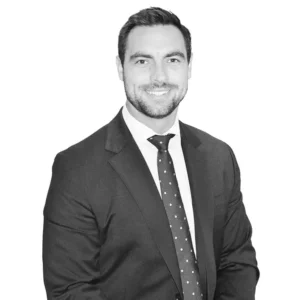A Total Ham
I’ve heard this short story a few times, and it came to mind when I decided to write on today’s topic.
It all starts with a curious little girl in the kitchen with her mother. Her mother is cooking a ham for dinner, and she cuts off both ends of the ham before placing it in the oven. As you might imagine, the inquisitive child asks her mother, “Why do you cut off the ends of the ham?”
The mother embraces this question, one that she has never really pondered before, so she searches for the most logical response. She knows she is mimicking how she saw her mother prepare a ham but proceeds to tell the little girl, “It probably helps soak up all the tasty juices.” Unsure, though, she encourages the little girl to ask her grandmother.
Grandmother submits that she was mimicking her mother, and that great-grandmother would be the best source in this treasure hunt. So, finally, great-grandmother dispels the tasty-juices-theory, has a good laugh, and explains that she never owned a pan large enough to fit the whole ham.
What was once a necessity evolved into a tradition.
The Why Behind the What
I had an old boss who was full of one-liners, little quips and adages he had acquired over a lifetime. Nothing original, I am sure, but it was all memorable and always applicable.
When we were stuck on a business decision, he would always lead us back to the why, and ask, “Why are we doing this?” He saw how distracted and consumed we got by the “what” and helped us navigate back to the “why.” He’d always say, “Look for the why behind the what.”
If you were to search the top ten TED talks of all time, you’d come across one from author and speaker, Simon Sinek. This talk, titled, How Great Leaders Inspire Action revolves around how great leaders and great companies start with the why. They draw you in with their mission and purpose – their why – and then explain the how and the what.
Our curious little girl could see what her mother was doing, but she wanted to know why she was doing it.
Aimless Planning
When we don’t understand why we are doing something, our efforts can become aimless. This is especially true when it comes to financial planning. There are plenty of articles, advice-givers, and textbooks that can tell you what to do. But, is it the right thing to do? The right thing for you, for your family, for your plan? To know this, you need to know why you are doing it.
The why can take two forms. It can take a very qualitative form in the sense of how every decision aligns with your values and aspirations. It can also take a very practical form when measuring each decision against how it benefits your unique situation.
One of the problems we all face is that when we don’t know what to do, we often choose to simply do it. At times, busyness can be mistaken for productivity. We set out to execute financial strategies with the intent of achieving positive and productive outcomes. Yet, we rarely stop to affirm that we know why we are doing this or that in the first place. Without knowing the reason why, we might be simply spinning our wheels.
Ready, Fire, Aim
I can empathize with eager investors/planners – their hearts are in the right place. They want to improve their financial situation, and they are ready to execute. They read an article, see a talking head on television, hear about an approach from a friend, and then they are ready to take action.
Let’s take a look at some simple and practical examples of this.
Five Twenty Nine
Imagine a parent with a child approaching college. They are curious about the most prudent options for funding their son’s or daughter’s tuition. They search the internet, read a few articles, and conclude that a 529 education savings plan is a popular and suitable option for funding college. So, with their kiddo just about to ship off to university they open a 529 plan and make their first contribution.
Here’s the issue. Our hypothetical parent determined what to do, but they never really stopped to ask why someone uses a 529 plan. Well, the why is found in the benefits a 529 plan can offer. In some states, contributions are deductible at the state level, and the growth of the investments are tax-free when resourced for qualified education expenses.
Assuming no state tax deduction, is our example parent getting much of a benefit by funding a 529 plan to be used in the near future to cover their child’s tuition? Not so much. To yield the greatest benefit from a 529, one would want a long time horizon of compounding. The goal would be to maximize the gap between what you deposit into the account and the actual value, this would represent the growth. More growth means more spending power and greater tax avoidance.
This is a simple example of how understanding the why matters. Setting up and funding that 529 takes some effort and it presents some limitations and restrictions. So, it’d be important to confirm that this solution is the right fit for your plan and your needs.
To Roth or Not To Roth
Let’s explore another hypothetical. A young and successful attorney learns of some new offerings around their employee benefits program. Our lawyer friend is a high-income earner, not yet married, and a prudent savers. He’s always looking for new opportunities to “save better.”
His benefits package now includes a Roth 401(k) option. He’s new to this concept of a Roth, so he jumps on the internet to ask the search engine if Roth savings plans are a good idea. What he reads is overwhelmingly positive regarding Roth accounts, so he opts to maximize this new offering through his employer.
There is a slight problem here. He researched and executed on what to do, but still doesn’t really understand why someone would resource a Roth over a traditional 401(k). As a high-income earner in the single-filer tax brackets, there is a chance that our imaginary law professional is in a higher tax bracket today than he might be in the future. Perhaps he’s even in a state with higher taxes than in Tennessee or Texas, where he plans to retire.
If he went a step further to understand why one would resource a Roth, then I’m sure his conclusion would be different. Simply put, you opt for a Roth when you conclude that paying taxes now is more favorable than paying taxes later, as you would in a traditional 401(k). Without understanding the basic why here, one could actually be causing financial damage to themselves.
A Child in the Driver’s Seat
Some of my fondest childhood memories were going up to visit grandma at her home in Cobb Mountian. An unassuming little town in Lake County (Northern California).
I’d play with my cousins all day, and we’d pick blackberries, collect golf balls in the creek behind the golf course, and enjoy all of the open spaces that surrounded us.
One memorable tradition was sitting on Dad’s lap in his little Chevy LUV pickup and getting to drive through the backcountry. I was 5 years old at the time, so it wasn’t so much driving as it was being in control of the steering wheel.
As funny as this sounds, this was the first time that I connected the dots that the steering wheel controlled the direction of the vehicle. In a child’s mind, I just assumed the car knew where to go, and the driver was pulling that wheel left and right for fun – like a dance of sorts.
So, what did I do when I got control of that wheel? I danced that car left and right, jerked here, there, and everywhere. Startled my dad a bit, I think. I definitely knew what to do – you turn the steering wheel – but it would’ve helped to know why you do it.
Cutting off the ends of a ham can be wasteful, but not dangerous. Letting your hands dance with the steering wheel can absolutely be dangerous, but luckily I wasn’t controlling the accelerator or the brake. Pursuing financial strategies and tactics without understanding why can be dangerous, harmful, and detrimental to your wealth.
As my old boss used to always say, “Look for the why behind the what.”
With regards,
Trevor Cummings
PWA Group Director, Partner
tcummings@thebahnsengroup.com





